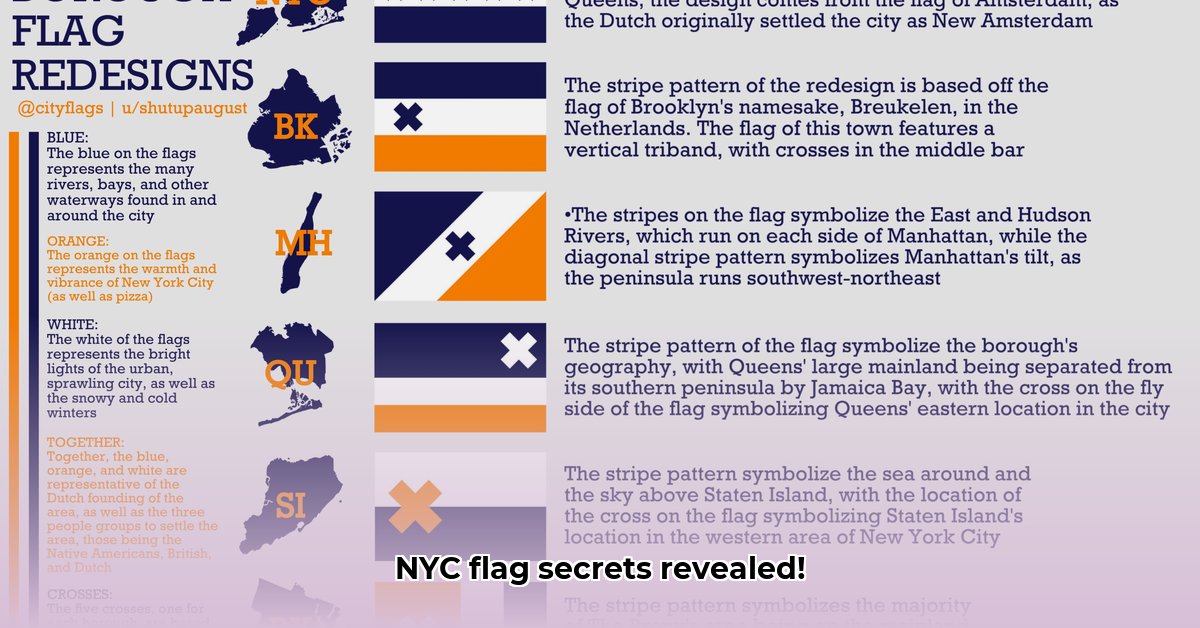
NYC Flag History and Symbolism: A Visual Timeline
The New York City flag—a bold splash of orange, white, and blue—is more than just a pretty picture. It's a visual storybook, a vibrant tapestry woven from centuries of history, embodying the city's spirit and evolution. Its design, a seemingly simple combination of colors and symbols, holds deep meaning, reflecting the city's Dutch origins, its rise as a major American port, and its ongoing journey as a global powerhouse. But how did this iconic emblem come to be? And what does it truly represent? For a deeper dive, check out this great resource on NYC flag history.
Dutch Roots and Colonial Echoes: A Colorful Beginning
The flag's striking colors—that sunny orange, crisp white, and deep blue—are a direct nod to New York City's Dutch heritage. In the 17th century, the Dutch West India Company, the driving force behind the establishment of New Amsterdam, proudly flew a flag featuring similar hues. These very same colors, vibrant reminders of the city's earliest European settlers, form the foundation of the NYC flag we know today. It’s a tangible link to the past, a family heirloom passed down through generations. The orange, in particular, evokes the legacy of the House of Orange-Nassau, the ruling family of the Netherlands.
The City Seal: A Miniature Masterpiece of Symbolism
At the heart of the flag lies the city seal, a miniature masterpiece of symbolism. This isn't merely a decorative element; it's a visual narrative in itself. The seal depicts a Native American, representing the Lenape people who inhabited the land long before European arrival. Alongside stands a beaver, a powerful symbol of the lucrative fur trade that fueled New Amsterdam's early prosperity. A sailor signifies the city's historical importance as a major seaport, vital to global commerce. Finally, an American eagle, a majestic emblem of freedom and national identity, represents the city's place within the United States. Together, these emblems paint a multi-layered picture of the city’s past, present and future, connecting indigenous history, colonial ambition, and national pride. But how accurately does the seal reflect the complexities of its historical context, and has its interpretation evolved over time?
1915: A Flag is Officially Born
While various versions of the NYC flag existed prior, it wasn't until 1915 that the current design was officially adopted. This wasn't a mere aesthetic decision; it was a powerful act of unification, creating a single, universally recognized symbol for the entire city. This marked a coming-of-age moment for the city's visual identity, signifying its readiness to take its place on the global stage. Did this act of unification successfully represent all the diverse people of New York City?
Unpacking the Symbolism: Multiple Interpretations
While the main elements seem clear, their meanings are surprisingly open to interpretation. The beaver, for example, might represent early colonial industry, resource exploitation, the city's relentless drive, or a complex interplay of all three. Similarly, the inclusion of the Native American figure evokes complex discussions about historical representation. Some see it as respectful acknowledgement of the original inhabitants, while others perceive it as a potentially problematic oversimplification of a far more nuanced history. This multiplicity of interpretations highlights how symbols can hold multiple meanings, influenced by the viewer’s perspective and historical understanding.
The Flag Today: A Symbol of Resilience and Unity
Today, the NYC flag stands as a powerful emblem of resilience and unity. It represents a city that has weathered countless storms and celebrated countless triumphs. It symbolizes the diversity of its inhabitants, a melting pot of cultures and backgrounds united by their shared home. When you see it waving proudly, it's a testament to the city's enduring spirit, a powerful visual reminder of its rich history and its bright future. But how effectively does the flag’s current symbolism reflect the evolving demographics and social values of modern-day New York City?
How the NYC Flag’s Symbolism Reflects Changing Social Values
The NYC flag’s symbolism isn't static—it’s dynamic. Its interpretation evolves alongside the city itself, reflecting changing social values and a deeper understanding of its complex history.
From Dutch Heritage to American Identity
Initially representing the Dutch colonial past (the colors referencing the House of Nassau), the flag's meaning shifted as New York became a vital part of the United States. The colors, once signifying a specific royal lineage, gradually took on broader meanings of liberty and patriotism. This transition mirrored the gradual adoption of American identity following the Revolutionary War. The deeper understanding of these historical shifts enriches our appreciation of the flag's evolution.
The City Seal: A Visual Timeline
The city seal tells an even more complex story. The images originally conveyed a somewhat romanticized vision of the city's beginnings. However, contemporary interpretations now recognize the complexities of colonization and its impact on Indigenous populations. This updated perspective necessitates a more nuanced understanding of the symbolism presented. How has this reevaluation changed our understanding of the flag's message?
Shifting Interpretations: A Mirror to Society
The symbolism of the NYC flag is a living testament to New York City's evolving identity. Each element carries multiple layers of meaning, shaped by the historical context and ongoing social dialogues within the city. This fluidity in interpretation is precisely what makes the flag so compelling and relevant.
Key Takeaways:
- The NYC flag’s design is rooted in the city's Dutch colonial past, but its symbolism has evolved significantly over time.
- The city seal combines elements representing indigenous populations, maritime trade, and American nationalism.
- Interpretations of the flag's symbolism continue to adapt, reflecting changing perspectives on history and social responsibility. The enduring power of the NYC flag lies in its ability to continually engage with the city's ever-evolving identity, making it a powerful symbol for both its past and its future.